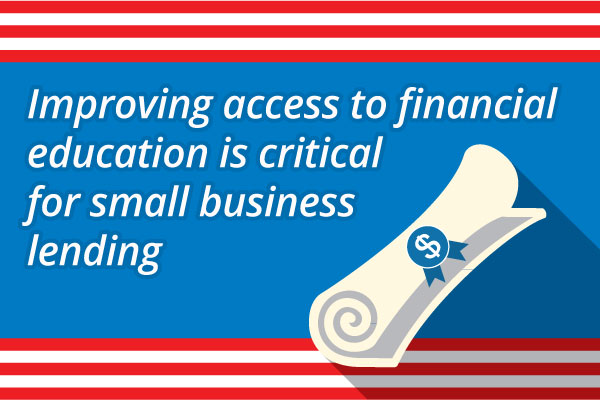Topics

In just one week, Augmented Reality (AR) proved itself to be the Next Big Thing in popular entertainment. Within days of Niantic Labs release of Pokémon Go, in which players "hunt" and "capture" fantastical creatures using their smartphone cameras, tens of millions of Americans have become hooked on the game. According to media reports, the app has already been installed on twice as many phones as Tinder™, is used twice as much as Snapchat, and is surpassing the all-powerful Twitter in its number of daily active users. The skyrocketing value of parent company Nintendo's stock price has provided further testament to the game's perceived long-term stamina. Beyond its nostalgia value -- the game is based on the popular Japanese cartoon and videogame series from the 1990s -- Pokémon Go is winning over hearts, minds and dollars due to its artful blending of fantasy game play and real-world locations. To play the game, participants must move through the physical world, often traveling many blocks or even miles in search of their elusive digital prey. Such material engagement -- and the physical exertion required to complete many of the quests -- is a far cry from the sedentary "couch potato" stereotype so long associated with video-gaming. Shops, restaurants and other commercial operations who find themselves near one of the game's many "Pokéstops"(virtual pit stops) and "gyms" (digital combat arenas) are seeing a marked uptick in foot traffic. Many stores are actively advertising via social media their proximity to game elements and the Pokémon that players have found nearby. Chicago's famed Art Institute received wide coverage for their boasting of various Pokémon found within their hallowed galleries, complete with iPhone screen shots of cartoon monsters perched amidst the Renoirs and Chagalls.

Barry Moltz, Small Business Expert Peter Bolin, Director of Consulting and Analytics for Experian appeared on episode #380 of the Business Insanity Talk Radio Show recently to talk about your business credit score. The show is hosted by Barry Moltz. In this blog post we include a transcript of Pete's appearance along with a link to the recording on Soundcloud. Barry Moltz: A lot of small business owners pay attention to their personal credit score, unfortunately, they don't pay attention to their business's credit score. To discuss this is Peter Bolin who is the Director of Consulting & Analytics at Experian, Peter welcome to the show.Pete Bolin: Thank you very much, Barry. It's very nice to be here.Barry Moltz: Now I don't find too many people who have a LinkedIn profile like yours that starts with "we torture data." So what does that mean?Pete Bolin: That's the truth. We try to use the data assets at Experian to squeeze out as much predictive information, and as much marking information that we can, and to help our customers, and clients and small business owners benefit as much as they can from our data.Barry Moltz: So why is it important, we all know how important it is to have a high personal credit score, but why should the business have a high credit score?Pete Bolin: Having a high credit score for business is critical. It helps them negotiate with creditors better, it helps them negotiate with their wholesalers better and it provides them the opportunity to get the best offer. Get the best rates. Get the best credit terms available and that's all driven by a high credit score.Barry Moltz: Now as a business do you check your credit score the same way you would check your personal credit score for example like on Experian?Peter Bolin: Yes, we have a web site, BusinessCreditFacts.Com, where a small business owner can go and access their credit report, understand all the information. It's very informative, it's very educational. They can even check the credit score planner, which gives them key information on the critical data elements that actually affect their score, and they can start to educate themselves about the factors that they can potentially use to improve their score.Barry Moltz: So Peter what are some of those critical factors? I think we are all familiar with the ones for our personal credit score. What are those for business?Peter Bolin: First of all, you want to make sure that you limit your debt. You want to make sure that you get that as low as possible. You want to make sure that the balance-to-limit ratio which calculates the balances to the total overall balances and keeping that very low will help your credit score. Also, obviously pay your bills on time, that's a big one. Limit the number of inquiries - meaning, limit the number of times you're actually shopping for credit. Only look for credit when you absolutely need it. Those three things are critical in keeping a credit score very high.Barry Moltz: So what's a good credit score for a small business, I know for myself for my personal credit score I try to keep it in the 750's if I can. What is good for a business?Peter Bolin: That depends on each lender. I can say that on average, teh average business credit score, base on our IntelliScore Plus is a 50, it ranges from 1 to 100. So the average score is about a 50. So I would recommend keeping it above that in order to get the best terms and conditions for your loan.Barry Moltz: Well I certainly appreciate you being on the show, where can people get more information on all of this to improve their business credit score?Peter Bolin: BusinessCreditFacts.com, which gives you access to the business credit report and also the score planner which is a key educational feature. Barry Moltz: Pete thanks so much. Peter Bolin: Thank you for having me Barry.

If you’ve ever seen an episode of Shark Tank, then you know that the question of a business’s valuation always comes up. Most of the time, and much to the “Sharks” dismay, the contestants overvalue their companies, or do not know their business’s valuation altogether. And more times than not, this results in the “Sharks” passing on the opportunity to invest in the company. While many small business owners and entrepreneurs may find it difficult to calculate a true valuation of their company, they have an understanding that how much their company is worth can have a significant impact on the business’s financial future. For example, an accurate business valuation can open the door for an entrepreneur to gain access to the financial capital needed to take their company to the next level. Whether it’s a financial institution or a private financier, both investors will want to have every detail at their fingertips as they decide how much funding can be extended to the company. An accurate business valuation provides insight into how far the business has come, as well as how far the business can go in the future – information that any investor would want to know. But the significance of an accurate business valuation doesn’t end there. Many small business owners either outsource their bookkeeping tasks, or have their employees manage the business’s finances. Whichever the scenario, wealth managers, accountants, investment advisors and other finance-related professionals need to have a clear picture of the company’s worth in order to provide counsel on potential investments or other financial decisions. Additionally, a business’s valuation can have an impact on a less obvious, but still important, element of an entrepreneur’s financial well-being – business insurance. Without an accurate valuation, a company could end up being over- or under-insured, which could negatively impact in either scenario. If under insured and something goes wrong, the business suffers, and if over insured, a small business owner is simply wasting funds that could have been allocated to paying down other expenses or used for growth opportunities. Lastly, and perhaps the most common need for an accurate business valuation is during the selling process. In this situation, the value of the business is the most important aspect of the sale, because it serves as the basis of all negotiations. An accurate assessment of the company’s worth can ensure that the business owner will be fairly compensated for their years of hard work and success. In any event, small business owners should not view their business’s valuation as just a number. A complete understanding of the business’s value can have positive implications to the future success of the company, as well as the owner’s financial well-being. Plus, having a keen understanding of their business’s value, will help keep business owners from needing to jump the “Shark,” or at least will better prepare them if they come face to face with one in the future.

In America, entrepreneurs can earn rock star status. From Thomas Edison, Dale Carnegie and Henry Ford to Steve Jobs, Mark Zuckerberg and Elon Musk, Americans deeply respect and even idolize those men and women who start from nothing to build vast fortunes through a combination of ambition, vision, creativity and perseverance. Certainly the free enterprise system has provided more than enough opportunities for both success and failure -- to give our country's entrepreneurs the drama a good rags-to-riches story demands. The need to raise capital, build a winning team, market new and untested products or services, fend off aggressive competitors, and overcome inevitable reversals of fortune are part and parcel of the entrepreneurial experience. However, the odds for success are not good. Historically, about a third of all businesses fail in their first two years, and only about half of start-ups make it beyond five. [1] With so many factors weighing against new companies you have to wonder, why bother? What drives entrepreneurs to risk it all and start their own businesses? The reasons entrepreneurs take the plunge tend to be as varied as the people themselves. Commonly cited reasons include: Independence. Traditionally, entrepreneurs like to blaze their own trails. They want to establish their own priorities, set their own schedules, and do things "their way." Although some may have problems dealing with authority, most entrepreneurs simply like the idea of taking on the responsibilities – and reaping the rewards – only possible when the business is yours. Building Wealth. When you work for somebody else, you're doing just that: Working for the benefit of another person. The only way to make real money is to turn that around, to get other people to work for you. Entrepreneurs understand how wealth is generated in the free enterprise system and recognize that ownership is the surest and fastest way to financial independence. Impact. Steve Jobs famously said that he wished to "make a dent in the universe." Many entrepreneurs are driven by the same desire to "make a difference," to change the world or, at the very least, disrupt their industry. Certainly, the most celebrated American entrepreneurs of the last 150 years have indeed changed for the better the way people live, work and play all around the world. Legacy. There is a universal desire to be remembered. To ensure their legacies, the pharaohs of ancient Egypt built pyramids. While few people today think in terms of giant stone monuments, they do attempt to secure their places in history through building companies that will stand the test of time – and pass wealth down to their heirs. The foundations, institutions and charities that bear the name of some of our most successful entrepreneurs – both living and deceased – represent another form of the immorality so many people pursue. Security. At first glance, starting a business from scratch seems like the riskiest of propositions. At the same time, the effort can also bring unparalleled security. After all, if you're in charge, you can't be laid off. Many of these examples are also echoed by several entrepreneurs that Experian reached out to, to learn what motivated them to leave the security of corporate jobs and strike out on their own. Rieva Lesonsky "The culture where I was working changed significantly. Plus, I was tired of making other people rich," said Rieva Lesonsky, founder and CEO of GrowBiz Media. "Today, the decisions I make, good or bad, are mine. I'm not punished because someone doesn't know what they're doing. If I knew back in 2008 what I know now, would I do it again? In a New York minute!" Brian Moran Brian Moran, founder and CEO of Brian Moran & Associates, tells a similar story. "I spent half my professional career in corporate America and half of it as an entrepreneur. I realized in my last stint in corporate America that some people were just born to be entrepreneurs; I am one of them," he continued. "I love what I do. I get to help other entrepreneurs run better businesses. Every day, when my feet hit the floor, I am excited for the day to start. It’s never dull or boring." Moran also has advice for would-be entrepreneurs about timing when it comes to launching a new enterprise. "The worst time to start a business is when you aren't mentally and physically prepared for the ride," he said. "If you haven't created a real plan of action for your company, then it will only be a matter of time before you hit an obstacle or bump in the road that will start your downfall. Don't waste your time, money and other resources starting a business if you aren't 100 percent committed to making it a success." Are you an entrepreneur? Tell us your story by posting a comment or tweet at @experian_b2b, we would love to hear about your business. [1] https://www.linkedin.com/pulse/20140915223641-170128193-what-are-the-real-small-business-survival-rates

Cash flow is vital for any business. If you don’t have enough cash coming into your business, you could find yourself unable to pay suppliers, or, more importantly, short of the financial resources necessary to invest back into the business and expand. Protect your cash flow by using these three ways to speed up cash collections. 1. Optimize Your Billing Policy Every business needs a formal policy for billing and collections. Set up a formal billing system in your organization that ensures bills are sent out on time. Use a standard format for your bills that encourages people to pay on time and in full. Make sure every bill contains all the details the customer needs to make the payment, as well as a deadline for payment. 2. Monitor Your Receivables It’s vital for any business to know how much cash is coming in on a daily or weekly basis. Put a system in place that keeps track of payments received, as well as tracking which bills are still outstanding. By tracking your cash collections in this way, you can identify which accounts are causing the biggest problems with cash flow in your organization, which means that you can then focus your efforts on those collections. 3. Follow Up Unpaid Invoices When customers don’t pay their bills on time, you need to follow up with them. Begin by sending a friendly reminder that the bill is still due, along with details of how the customer can make the payment. In many cases, this reminder will do the trick, but with some customers, you will need to take a tougher approach. Consider imposing late payment penalties on customers who miss payment deadlines to compensate for the damage that disrupted cash flow can do to your business. Alternatively, you could try offering a small discount for customers who pay within a few days of the invoice. This positive approach encourages customers to deal with invoices as soon as they receive them. Conclusion Cash flow is the lifeblood of any business, so don’t let yours dry up. Follow these tips to speed up cash collections and cut down on the number of bills that go unpaid. Sources http://quickbooks.intuit.com/r/financial-management/five-ways-to-speed-up-your-cash-flow

The IRS audits a small percentage of business tax returns each year. Tax audits take up time and resources, and most small business owners would prefer to spend their time making money. As a result of exhaustive research, we’ve identified these five tips to help you minimize the risk of a tax audit. 1. File Returns on Time It’s true that the IRS has rules governing what happens when you file a return late, and while the initial penalty might not seem that bad, late filing is a trigger. If you routinely file late returns, you’re going to increase the chance you’ll be audited. To avoid temptation, prepare accurate records in a timely manner. If you don’t have the time or skills background to do the accounting yourself, it’s worth hiring someone to do it for you. The best way to ensure that you file on time is to make preparing returns extremely quick and easy to do. 2. Be Cautious About Rounding It’s perfectly acceptable to round up to the nearest whole dollar, but that’s as far as you can go. If you paid yourself a salary of $60,005.32, make sure to report the number as $60,005. If you round to an even $60,000, the IRS may be knocking on your door. 3. Manage Independent Contractors Carefully The IRS is very clear and detailed in their definition of when a worker is considered to be an independent contractor. If you have independent contractors in relation to employees, that could trigger an audit. If you aren’t sure of a worker’s status, get advice from a tax attorney or CPA. You can also file a Form SS-8 with the IRS to get an official ruling. 4. Be Prepared When Claiming Vehicles for Business Use If you claim 100 percent business use of a vehicle, and you don’t have another vehicle for personal use, you’ll need very detailed records. Track the mileage and purpose for each trip that will document the business purpose of all the miles driven each year. 5. Don’t Pay Unreasonably High Salaries Some individuals have been known to pay shareholders who work in the business a very high salary specifically to reduce the company’s tax burden. Avoid any potential issues by ensuring that the salaries paid to shareholders are in line with industry standards. Even if you’re doing everything right, it’s always possible that you’ll be audited someday. Develop a mindset that anticipates the worst. Be rigorous in keeping detailed documentation as if you were going to be audited on an annual basis. You’ll be glad you did if the IRS does call. Sources https://www.americanexpress.com/us/small-business/openforum/articles/7-audit-red-flags-small-businesses-need-to-avoid/http://quickbooks.intuit.com/r/taxes/8-common-tax-audit-triggershttps://www.legalzoom.com/articles/how-to-avoid-a-tax-audit-7-tips-for-small-business-owners

All business owners should be curious of how much their enterprise is worth, and not just when they are getting ready to sell. Understanding the true value of a business is crucial for every day operations and can set a business up for success. Here are the top four reasons for placing an accurate value on your business: Financial Planning A reliable and accurate valuation of a company can help a business owner better manage their business and personal funds. Wealth managers, accountants, investment advisors, estate planners and other finance-related professionals will then have a precise picture of the business’s financial outlook and can provide more knowledgeable counsel for a prosperous financial future. Insuring the Company A business’s valuation is also very important to securing proper business insurance coverage, e, which, interestingly, is integral to maintaining the value of the company. Without an accurate business valuation report, a business could wind up being over- or under-insured. This is not only bad for the bottom line, but it can skew financials and affect the value of the business when it is being prepared for sale. . For instance, a business owner may find that being over-insured has tied up money that could have otherwise been put toward paying down liabilities. Those funds could also have been reinvested into the business to promote growth, instead they are unavailable which inhibits the overall value of the company. Raising Capital Having an accurate valuation report makes it easier to raise funding. Potential investors love details, and a concrete value associated with a business can help demonstrate how far that business has come, and how new funding will help it grow. Selling the Business The value of the company is arguably the most important aspect of the sale of a business. It’s the basis of negotiations, and often serves as a representation of years of hard work and success. Knowing how much a business is worth before you put it up for sale can help a business owner ensure that they’re fully and fairly compensated. Which Values Do I Need to Know? So, now that the ground work has been laid on why business valuations are important for every business owner. It is important to understand the different definitions of value and what each of them means to the business. Enterprise Value - The enterprise value is similar to a balance sheet. It is calculated by adding together the company’s debts and the total market capitalization, and then subtracting cash holdings. It’s used as a quick way to determine value. Equity Value -The equity value describes how much the company is worth to shareholders. It’s calculated by adding the company’s cash holdings to the enterprise value, as well stock options, securities, and other potential-creating investments and assets. Examining the equity value of a company is good for getting an idea of both its current and future values. Asset Sale Value -This value only takes into account the value of the company’s assets. This includes inventory, fixed assets such as paid-off real estate, equipment and vehicles, as well as intangible assets such as equity. The asset value does not include cash or liabilities. Liquidation Value -This is how much a business owner would get if they sold off all of the company’s assets. While it does include cash and other liquid funds, it does not include intangible assets. The liquidation value is most often used for bankruptcy cases, or when the company is otherwise in trouble and looking for a quick sale. Key Performance Indicators -While not entirely financial, this final type of valuation tells business owners how effective the company is at meeting its objectives. Business owners can use these benchmarks to compare their operations to other companies across their industry, allowing them to determine specific strategies for success. Key performance indicators directly correlate with the value of the company, as meeting the business owner’s specific goals is integral to growth and profit. By understanding the value of the business, business owners can position themselves for success in the near term and the future. Experian provides comprehensive reports that include multiple valuation methods and estimates you can rely on. See a sample report. Related article: Tips for Buying or Selling a Business - Richard Goeldner, Small Business Matters Podcast

Understanding the ins and outs of financial management is important for every consumer. Being educated on managing their credit, understanding the impact of a credit score, or grasping simple bookkeeping can be intimidating without the proper training. When it comes to business owners, it is even more important, because improper management of their finances can be detrimental to their bottom line. However, with current regulations in place, it makes it difficult for consumers and small business owners to know where to turn to seek out advice without having to pay a steep price for assistance. Currently, Congress is reviewing legislation that would remove some of these challenges to further the development and delivery of personalized credit education. While the legislation would have an obvious benefit for consumers, it could also help improve the financial standing of entrepreneurs and small businesses owners. The fact is that many business lenders often rely on the commercial credit of the enterprise and the personal credit of the business owner when extending lines of credit. This is especially true for sole proprietorships and partnerships. Small business owners want, and need access to personalized credit education It’s estimated that more than 120 million credit score disclosures (key factors that may adversely affect a consumer’s credit score) are delivered to consumers each year when they apply for a mortgage, are denied for credit or are offered less than favorable terms on a loan. The number of score disclosures is likely to increase with the growing number of lenders providing credit scores to consumers on their monthly billing statements. Transparency of credit scores is a good thing, but a score disclosure simply cannot help consumers answer the question, “How can I improve my credit score?” For this advice, they often turn to the credit bureaus that generate the score. However, credit bureaus are only permitted to provide general information regarding a consumer’s score. They are unable to provide personalized steps to help consumers understand what they need to do to improve their score. This is primarily due to a little known federal law — the Credit Repair Organizations Act (CROA) — being misinterpreted. CROA stands in the way While CROA has been effective at shutting down credit clinic scams, it has recently been misapplied by the courts in a way that has had a negative effect on innovation and competition in the credit education marketplace. For example, CROA requires consumers to wait at least three days before they can receive the requested services. In today’s interconnected world, requiring small business owners, let alone a consumer to wait three days for timely and personalized credit education simply doesn’t work. A recent joint study from the Policy and Economic Research Council (PERC) and Take Charge America Institute (TCAI) at the University of Arizona, entitled “Is CROA Choking Credit Report Literacy?” sheds new light on the barriers that consumers and small business owners face when accessing the innovative tools that provide individualized credit education to help improve their credit score. The study finds that even after accounting for different price points, including free access, CROA’s requirements may be deterring the people who need such services from taking advantage. Even when it was free, just 31 percent of consumers hit the registration page after exposure to disclaimers on the landing page, and just 6 percent completed the process after the three-business day mandatory wait. Furthermore, 46 percent of consumers indicated that they would have used the credit education product for free if they could do so without having to wait three days. Reform holds potential for small business owners, especially women and minority-owned businesses Changing this law to enable the CFPB-supervised credit bureaus— those best positioned to help consumers in this area — to provide credit advice would have tangible benefits for consumers and small business owners alike. The PERC/TAIC report found that innovative credit education can lead directly to positive financial behaviors. Of those that successfully completed the personalized credit education service experienced positive material impacts (moving to a better risk tier) at nearly twice the rate of those receiving educational materials only. Reform can also be vital to helping women and minority-owned small businesses get on level footing as small businesses owned by men. A recent analysis released by Experian found that a gender gap exists in both commercial and consumer credit files: The average commercial credit score for a woman-owned business is 34, while the average score for a male-owned business is 35; The average consumer credit score for women business owners is 689, compared to 699 for male business owners; More than 22 percent of male-owned businesses have at least one open commercial trade line, while the same can be said for only 18.5 percent of women-owned businesses; In the last 24 months, female business owners had an average of 1.3 personal accounts become 90-plus days past due, while male business owners had an average of 0.9 go delinquent. It is possible that the lack of parity in access to credit has had a direct and quantifiable impact on the bottom lines for women-owned businesses. For example, Experian’s analysis found that more than 24 percent of male-owned businesses have sales that exceeded $500,000, while only 14.5 percent of women-owned businesses see sales of that size. In addition, 21.2 percent of male business owners have a personal income of $125,000 or greater, compared to just 17.4 percent of women business owners. Similarly, in a July 2014 report entitled “21st Century Barriers to Women’s Entrepreneurship,” former-Senate Small Business Committee Chair Maria Cantwell (D-Wash.) found i that $1 of every $23 in conventional small business loans goes to a woman-owned business. While improving access to innovative credit education is not a cure all, small business owners still need to develop solid business plans. However, personalized credit education could go a long way towards helping entrepreneurs improve their personal credit standing so they can access the affordable rates and terms needed for operating capital or a startup loan. Congress must pass legislation to remove regulatory barriers standing in the way of innovative credit education To help remedy the situation, Congress should pass H.R. 347, the Facilitating Access to Credit Act of 2014. The bipartisan legislation introduced by Reps. Ed Royce, R-Calif., and Ruben Hinojosa, D-Texas, would exempt reputable nationwide Consumer Financial Protection Bureau –supervised and examined credit bureaus, such as Experian, from CROA’s requirements. The legislation also would ensure that the statute’s critical consumer protections still could be enforced against unscrupulous credit clinics. Recognizing the positive impact of CROA reform on financial literacy in the communities that they represent, several national organizations have signed on to get behind this important effort. Policy resolutions supporting reform of CROA have been adopted by the National Black Caucus of State Legislators, the National Hispanic Caucus of State Legislators, the National Bankers Association and the United States Hispanic Chamber of Commerce. The bottom line is that financial education is extremely important. What is even more critical is the ability to have organizations that are qualified to provide the tools to improve credit standing and advice on how to utilize them. In the end, this will not only help consumers enhance their own financial experience, it will help small business owners be better prepared for potential growth opportunities and stimulate the economy.

Small businesses who send direct mail advertisements to their customers find this to be a highly effective marketing strategy. Where emails can be deleted immediately or never even looked at, people still head to their mailboxes daily. According to the United States Postal Service, 98 percent of people retrieve their mail daily, and 77 percent of people sort it immediately. This gives companies access to an audience who could potentially seek out their business right away. With direct mail marketing, there is a high potential Return on Investment because this type of advertising is extremely targeted. Small businesses can market just to the consumers they think will be most likely to purchase from them - rather than mass advertising through television on email campaigns. Direct mail proves to be a more personal way to reach potential and existing customers, and it encourages businesses to build a relationship with their customers. There is measurable feedback on direct mailing campaigns because businesses can directly count how many responses they see to their advertisements or how many people use their coupons, for instance. To make the best use of direct mail marketing, businesses can purchases data append services to update and provide more information to their existing prospect or customer lists. They also can purchase mailing lists relevant to the types of people they are looking to sell to in order to best target prospects in the area. Sources http://www.delivermagazine.com/2012/01/outside-the-box-direct-mail-continues-to-prove-its-worth/ http://oneims.com/blog/2010/03/22/6-benefits-of-direct-mail-marketing-campaigns/ https://www.usps.com/business/direct-mail-benefits.htm
